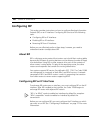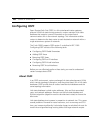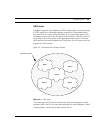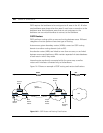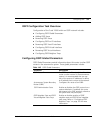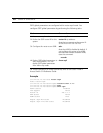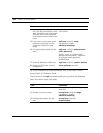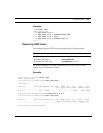
ADC Telecommunications, Inc.
298 C
HAPTER 14: CONFIGURING IP
Configuring OSPF
Open Shortest Path First (OSPF) is a link-state-based interior gateway
protocol. With link-state routing protocols, routers maintain a link-state
database that contains current information on the state of each
communications link in the network topology. This information enables
routers to determine the best routes to each destination network within a
single autonomous system of networks.
The Cuda 12000 supports OSPF version 2 as defined in RFC 1583.
Configuring OSPF consists of the following tasks:
■ Configuring OSPF Global Parameters
■ Adding OSPF Areas
■ Removing OSPF Areas
■ Configuring OSPF on IP Interfaces
■ Configuring OSPF Virtual Interfaces
■ Removing OSPF Virtual Interfaces
Before you can effectively perform these tasks, you need to understand
certain concepts about OSPF.
About OSPF
In an OSPF environment, routers exchange link-state advertisements (LSAs)
which contain topology information, and they store these LSAs in link-state
databases. OSPF ensures that all routers have identical databases and the
same topology information.
Link-state databases include router addresses, links and their associated
costs, and network addresses. Routers use the link-state database and
Dijkstra’s algorithm (algorithm used to calculate best routes) to choose the
best route.
Link-state database size increases in proportion to network size. This causes
several problems. Demand for router resources, such as memory and CPU
time, can increase significantly. It also takes longer to calculate link costs for
more links and generate large routing tables that large networks require.



